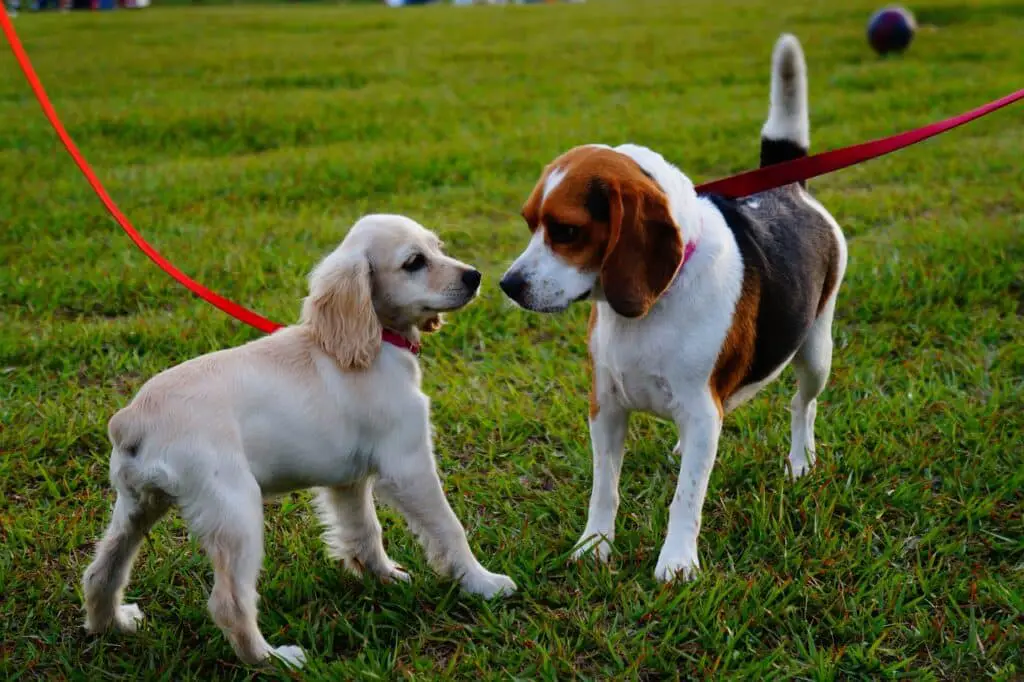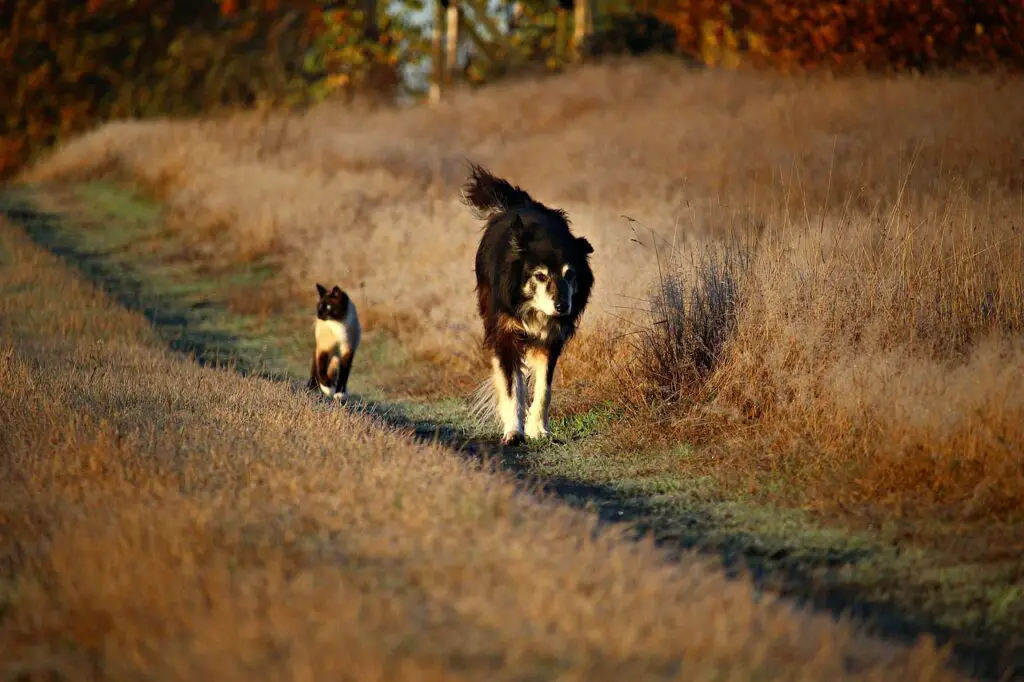There are a few reasons why your dog might walk in circles.
One possibility is that they’re trying to communicate something to you, such as being hungry or needing to go outside.
Another possibility is that they’re experiencing some type of neurological issue.

Could be a medical condition
The most likely reason for your dog to walk in circles is because they have a medical condition.
There are several possible causes.
- Degenerative Joint Disease (DJD)
- Neurological Disorders
- Hip Dysplasia
- Cauda Equina Syndrome
- Spinal Stenosis
- Spondylosis
DJD
Degenerative joint disease (DJD) can cause dogs to lose their balance and start circling around.
DJD may also cause pain in the affected joints, which would make your dog want to stop circling.
It can affect any joint but is most common in the hips and elbows.
Neurological Disorders
A neurological disorder could cause your dog to circle.
Most often, this happens when your dog has an injury to his brain or spinal cord.
This could happen from a car accident or other trauma.
It could also occur if he was hit by another animal.
Hip Dysplasia
Hip dysplasia occurs when a dog’s hip bones do not develop properly.
As a result, the pelvis does not grow correctly.
The muscles attached to the pelvis become weak, causing the dog to walk with a limp.
Hip dysplasia is more common in large breeds like Great Danes, German Shepherds, and Doberman Pinschers.
Cauda Equina Syndrome
Caused by damage to the lower lumbar spine, Cauda equina syndrome (CES) causes your dog to walk in circles.
The symptoms of CES include weakness in the back legs, loss of bladder control, and incontinence.
Spinal Stenosis
Another cause of circling is spinal stenosis.
Spinal stenosis occurs when the space between the vertebrae becomes narrow.
This can cause pressure to build up on nerves and blood vessels in the spinal canal.
The symptoms of spinal stenosis include weakness in one or both hind legs, lack of coordination, and difficulty standing up straight.
Spondylosis
Another condition that could cause your dog to walk in circles is spondylosis.
Spondylosis causes inflammation and degeneration of the intervertebral discs.
This can lead to nerve irritation, compression, and pain.
In severe cases, it can cause paralysis.
Could be due to boredom
If your dog is just bored out of their mind and walks around in circles, this could be due to a variety of things.
They may have been let out into a fenced yard without supervision while you were at work, or maybe they got left alone for too long because you forgot about them.
This can lead to them getting bored and running around aimlessly until they get tired of circling and decide to stop.

Dogs could be trying to mark their territory
When dogs are out and about on a leash, it’s easy for them to get distracted by other things.
When this happens, they may start to circle around you to make sure that they don’t lose track of where you are.
This can also happen if they’re bored.
If you notice that your dog is circling around you while you’re walking, it’s probably because they want to tell you something.
They’ll usually stop when you give them a verbal command, so try saying “sit” or “stay” to see if they obey.
You should also let them sniff at you to see if they’re interested in petting you.
If they are, then you should say “good boy” or “good girl” to encourage them to keep doing what they’ve started.
Might have something to do with their natural instincts
If your dog is walking in circles, it’s best to take them to the veterinarian for an evaluation.
The most likely reason is that they’re trying to communicate something to you, such as being hungry or needing to go outside.
When dogs walk in circular patterns, they can usually get around this by changing direction and moving faster, so you won’t see it unless you’re looking for it.
In addition, if your dog is walking in circles, they may be trying to tell you that there’s something wrong with them.
This could mean that they’re feeling stressed or anxious, which is another common cause of circling behavior.
Puppies might do it when they are trying to figure something out
This can happen to puppies too if they haven’t been socialized enough yet.
Puppies are very curious and like to explore new things.
They will often start to circle in order to get a better look at what they see.
This is especially true if they haven’t had much experience interacting with other dogs before.
It doesn’t necessarily mean that your puppy has an issue.
It’s just a behavior that they’re going through while figuring out how things work around them.
It’s also possible for older dogs to do this, although it’s less common.
It’s also likely that your dog is doing this because they like what they see.
That’s okay!
Just remember that if you want to stop this behavior, you need to teach them how to interact with people and other animals properly.
It could be a sign of excitement
You know how kids can get excited about something and start running around like crazy?
Well, that’s what dogs do too.
They might start walking around in a circle because they want to show off for their human friends, or maybe they’re trying to play with another pet or toy nearby.
Your pup may have been acting playful all day, but now they’ve found something that really gets their attention – like another dog.
If you see your dog circling, don’t ignore them.
Instead, try to catch them in a stationary position and talk to them.
You might hear “woof woof” or bark, which means that they’re happy to see you.
If they’re barking at nothing, then they’re probably just confused.
Just keep an eye on them until they calm down.

Or your dog could just be playing
When playing with their toys, dogs will sometimes play “tag” with each other by chasing each other around in circles.
This can also happen when dogs are having fun and don’t know how to stop themselves from running in circles.
If you think your dog might be enjoying themselves too much, try distracting them with food treats or a toy.
You may find that once you give them something else to do, they’ll start playing again without going so far into the circle.
- What Dog Breeds Have Pink Skin? - March 24, 2023
- What Are the Most Inspiring Dog Breeding Quotes? - March 20, 2023
- Can Pheromone Spray Help Improve Dog Breeding Results? - March 19, 2023








